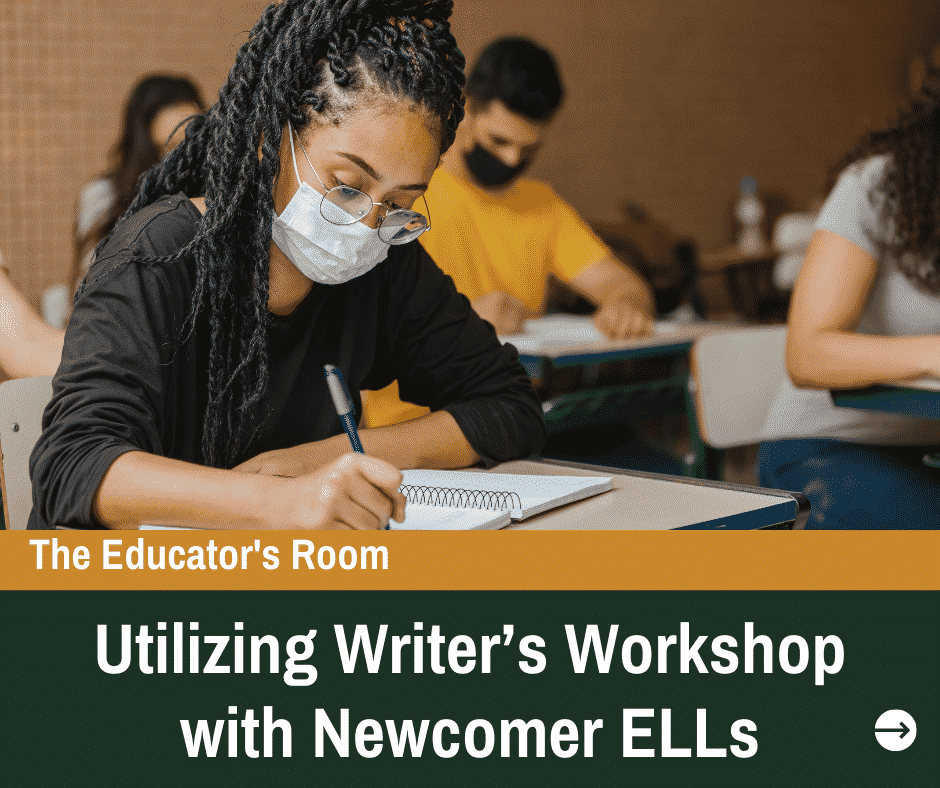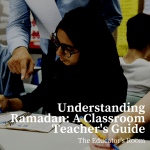 By Samantha Azatova, M.Ed.
By Samantha Azatova, M.Ed.
There’s nothing quite like teaching Writer’s Workshop to students who started their English learning adventure…that day. In my elementary school we have students from around the world, many of who are new to English, join our workshop-based classrooms every semester. The workshop model is fabulous for allowing students to take risks, grow autonomy, and explore the content at their own pace. It can also be overwhelming for newcomer ELLs who are often used to a very different structure in the classroom.
Over the years, I have had the privilege of introducing and modifying in particular Writer’s Workshop to my students who are new to English. Some of my modifications have been absolute flops (read: overusing Google Translate). Others, the ones I want to share with you today, have helped me build confidence and excitement around writing in my newcomers, and in the process, have helped them grow as English learners.
Tip 1: Let them write in their native language…at first
They’re in a new school, getting used to a new system, a new teacher, and, on top of that, a new language. They may have never seen the workshop model before and now they’re being asked to do it in a language they have little to no experience in? Give them a break. Unless I have a kid who is just really excited to use his/her new English words, I usually give students two to three weeks participating in Writer’s Workshop in their own language. I find that it allows them to learn Writer’s Workshop as a system before applying a new language to it.
During this time is when I often find a student who speaks the same language as my new student to translate or I break out Google Translate so that I can explain how Writer’s Workshop works and answer any questions they may have.
Mind you, I only encourage writing in the native language for absolute newcomers. If a child can form even the most basic phrases, I expect him/her to write in English. The reason for this is that the transition from writing in their native language to English can often be tough for kids. However, working through a tough transition later is always better than having a child staring at an empty piece of paper for an hour, or worse yet, erupting into tears on the first day.
Tip 2: Model simple writing
I asked one of my recent students (with who I have a common language, thankfully) why he wasn’t writing during Writer’s Workshop even though he absolutely was proficient enough in English to participate. He sighed and answered, “All the examples we see in class are so good. I can’t write like that. I don’t know where to start.” This is a sentiment that I’ve heard time and time again. The same way we wouldn’t show a Kindergartener writing examples from 5th grade, newcomer ELLs need to see writing samples that are within their own ZPD (zone of proximal development). We meet them where they are.
Whenever I conference with my newcomer ELLs, I come bearing a few writing samples aligned with their writing unit that are just slightly above their current proficiency level. If a student is writing at the phrase level, I bring examples with simple sentences. If s/he is writing with simple sentences with one or two specific words, my examples include expanded sentences with a few more specific words. Oftentimes I bring writing that I’ve done using sentence stems, and I leave the sentence stems with the student to encourage production. It all comes down to giving students the license to write at the level of their English proficiency and celebrating what they can do.
Tip 3: Allow for paper choice
There are few things more paralyzing than staring at a 25-line paper and knowing that the total sum of your current English vocabulary wouldn’t fill even one page of it. I know it seems like a small thing, but I’ve had more tears because of unsuitable paper choice (and more victories because of appropriate paper choice) than any other modification that I’ve tested.
For my newcomers who are in 3rd grade and under, I like to start with paper that has a big space for a picture and maybe three to five lines for writing. I encourage labeling the pictures and using the lines to write using the words found in the labels. Then, as students progress in their English proficiency, I offer paper with 7 lines, 10 lines, 13 lines. This system allows for a choose-your-own-adventure – type experience for them. If they have more to write on a page and need more lines, we just cut up another paper and tape the lines to the bottom of the page (folding it to fit in their Writing folder). No big deal. As the lines become more abundant, the picture becomes less and less of an important aspect of their writing experience until they begin approximating the writing volume of their classmates.
Tip 4: Celebrate!
Writing in a foreign language is tough. Not only do you need to decide what to write about, but you also have to make sure that you know all the words and structures necessary to write that. It’s a lot to think about, especially if you’re nine years old!
I always encourage my newcomers to share their writing with the class. Before they share, I often give a little reminder to the class about how amazing it is that this student has written in English and I preemptively congratulate the student on his/her courage to share the writing. This shifts the attitude of the other students to celebrating our newest English-language writer instead of comparing the newcomer’s writing to their own. This is also an important lesson for the rest of our students that differences are to be celebrated, not censured, and that everyone’s work is unique and valuable.
I love seeing that look of both fear and uncertainty from newcomers who have just shared their work for the first time, and then seeing the look change to pride and exhilaration when they look out onto a classroom full of smiles and cheers!
Of course, as with anything, there is no silver bullet to engaging a newcomer ELL in Writer’s Workshop, but maybe one of these tips will be the answer that works for the newcomer in your life!





